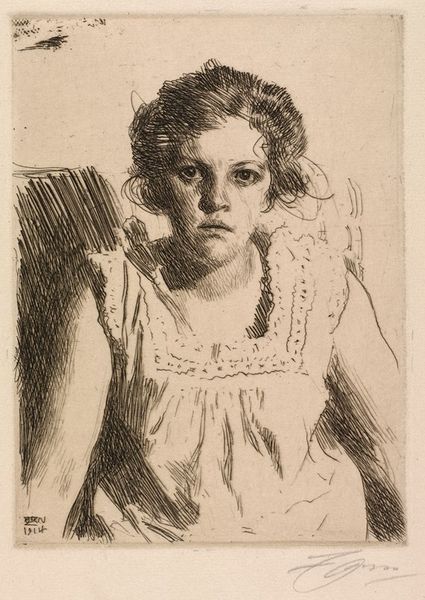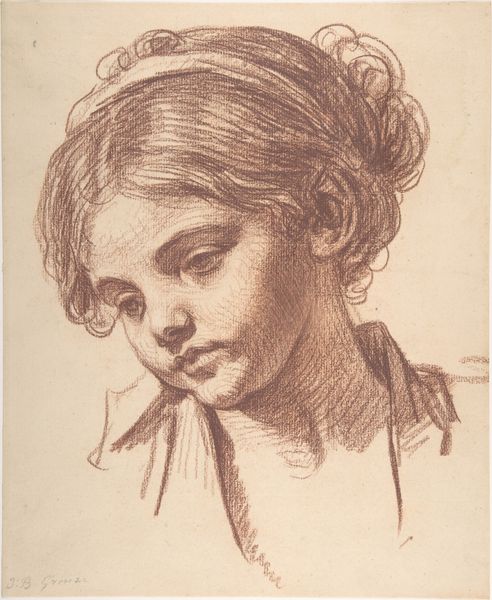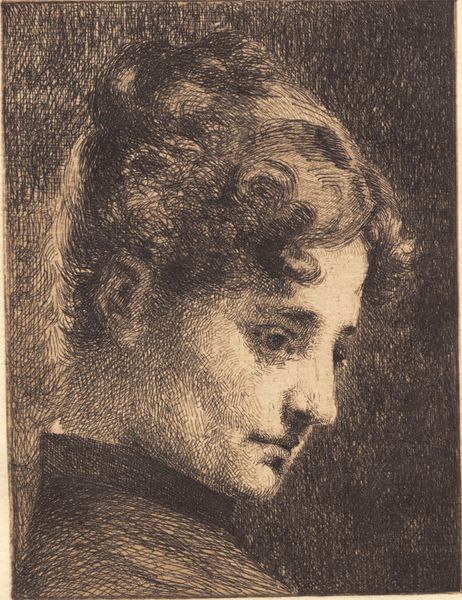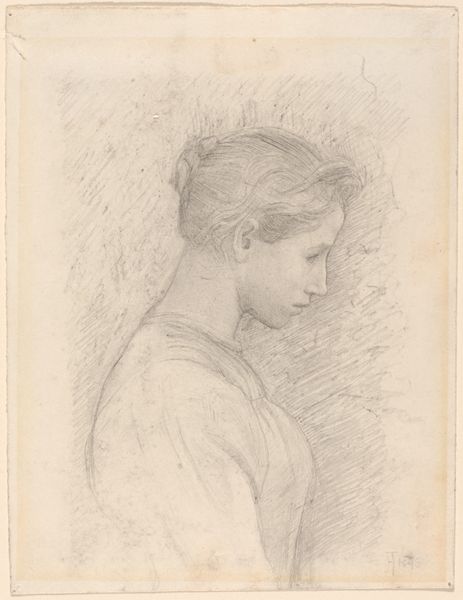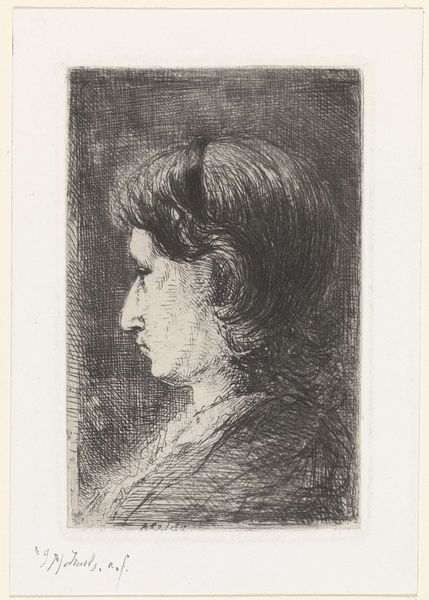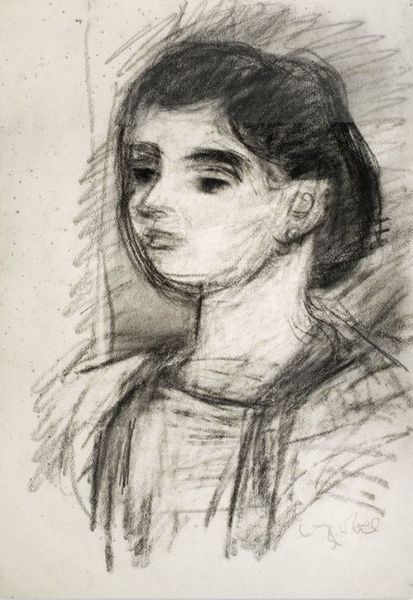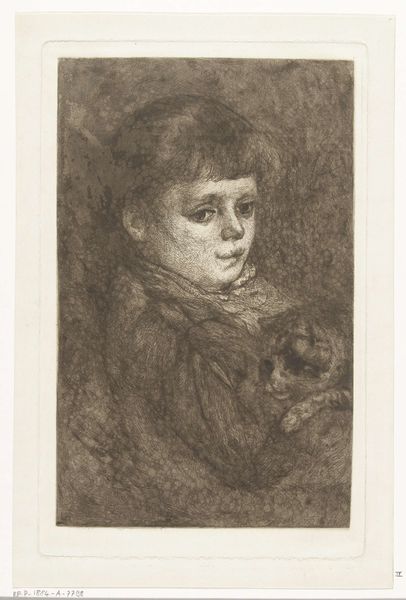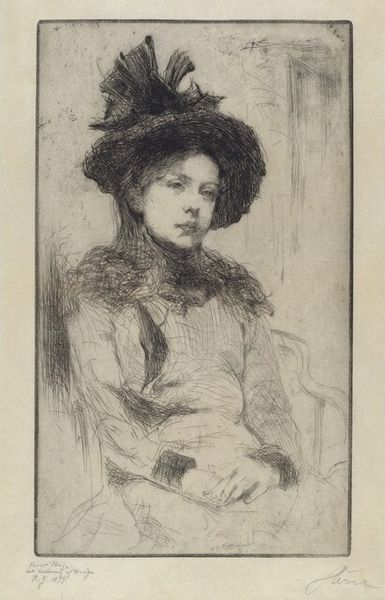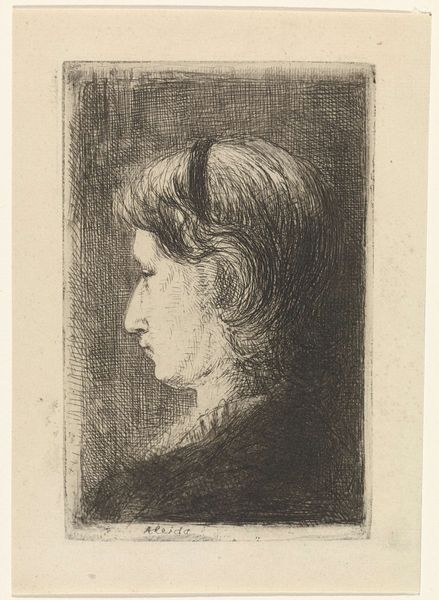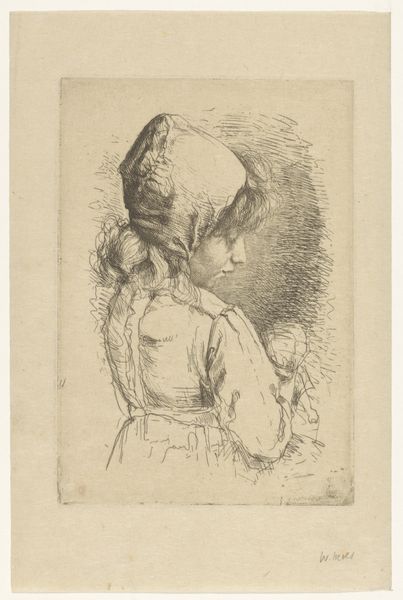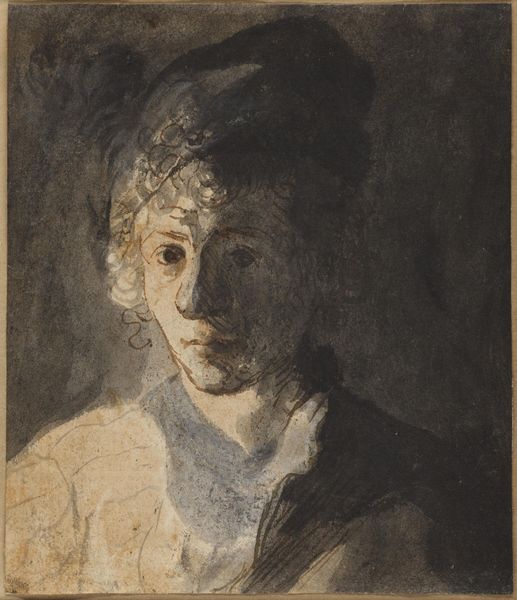
Copyright: National Gallery of Art: CC0 1.0
Curator: Let’s turn our attention to “Maggie, A Village Child,” a portrait crafted around 1904 by the artist Augustus John. It's a print, rendered with pencil and charcoal. Editor: It strikes me as a bit wistful, perhaps even melancholic. She seems lost in thought, or maybe just burdened. The monochromatic palette only adds to the solemn mood, doesn't it? Curator: Yes, but I'm also intrigued by the social commentary embedded in John's choice of subject. Representing working-class children, individuals easily overlooked, was not particularly fashionable during the Edwardian period. It raises important questions about visibility and representation. Editor: Absolutely. You can sense that John’s not simply recording what's there, but really engaging with Maggie’s presence, and perhaps imagining the unseen realities of her life. Notice how her hand delicately touches her neck, a tender and yet unsettling gesture that seems so revealing. Curator: Precisely. The artwork subtly invites us to contemplate Maggie's internal world within the context of her socio-economic circumstances, particularly the innocence of youth juxtaposed with the hardships of life. How these realities were—or weren't—acknowledged in early twentieth century Britain is, to me, as essential as the print itself. Editor: I agree! Looking closely at this work I imagine it also encourages a quieter and slower mode of viewing. Its beauty reveals itself little by little as one takes it in, the layers of pencil and charcoal as fragile and delicate as memory itself. Curator: I couldn't agree more; it encourages us to seek greater understanding of this moment captured in time, and the social structures that framed the lives of many during this era. Editor: Absolutely, it all goes towards reminding us of both the transient and persistent nature of art and the world we live in.
Comments
No comments
Be the first to comment and join the conversation on the ultimate creative platform.
